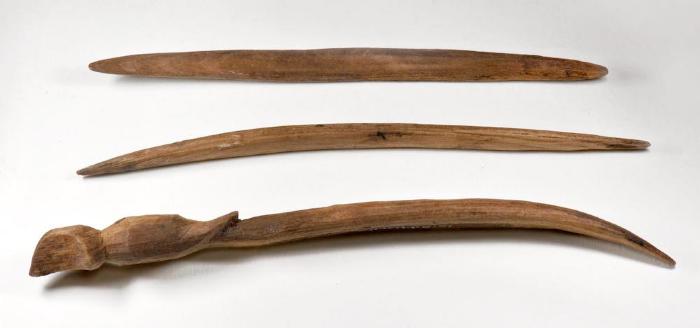Septum Piercing — Maitaq

In classical Alutiiq society, men, women, and children often wore nose rings. They placed these decorations through a perforation in the nasal septum, the piece of cartilage that divides the nose. In Alutiiq the septum is known as kucurwik, a word derived from the term for a partition. In contrast, the term maitaq, is the specific word for a septum piercing. It comes from a root word meaning 'base of' and probably refers to the base on the nose where the pierced hole and nose pin were located.
What did nose ornaments look like? One 18th century observer describes girls wearing slender bones, dentalium shells, or pieces of valuable abalone shell in their noses. Another suggests that people wore animal teeth in this location. The most detailed description indicated that the Alutiiq hung strings of beads from thin, slightly curved pieces of wood wrapped in a one-inch piece of gut. The gut-wrapped portion of the pin sat in the area of the maitaq—or piercing–presumably to protect the skin from irritation.
Archaeological finds suggest that nose ornaments are at least 1,000 years old. Researchers find small rings of polished coal designed to hang from the nose in ancestral settlements. Thin wooden nose pins have also been found. An example from Karluk has a puffin carved in one end.
